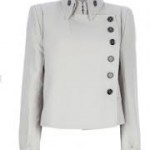The face to face interview
![]()
 I help clients prepare for “the interview” for a promotion or just a “look see” in some cases. Basic critical elements for the interviewee are dress, behavior (body language, facial expressions) and projecting confidence. However, the talking points and engaging the interviewer so they want to help you get promoted is just as, if not more so, important. You want to create a winning interview so you will be recommended, or at least be considered, for the next position. Also, ask probing questions. This way, for the second interview, you will be able to provide your insights on issues that are not common knowledge for the role.
I help clients prepare for “the interview” for a promotion or just a “look see” in some cases. Basic critical elements for the interviewee are dress, behavior (body language, facial expressions) and projecting confidence. However, the talking points and engaging the interviewer so they want to help you get promoted is just as, if not more so, important. You want to create a winning interview so you will be recommended, or at least be considered, for the next position. Also, ask probing questions. This way, for the second interview, you will be able to provide your insights on issues that are not common knowledge for the role.













